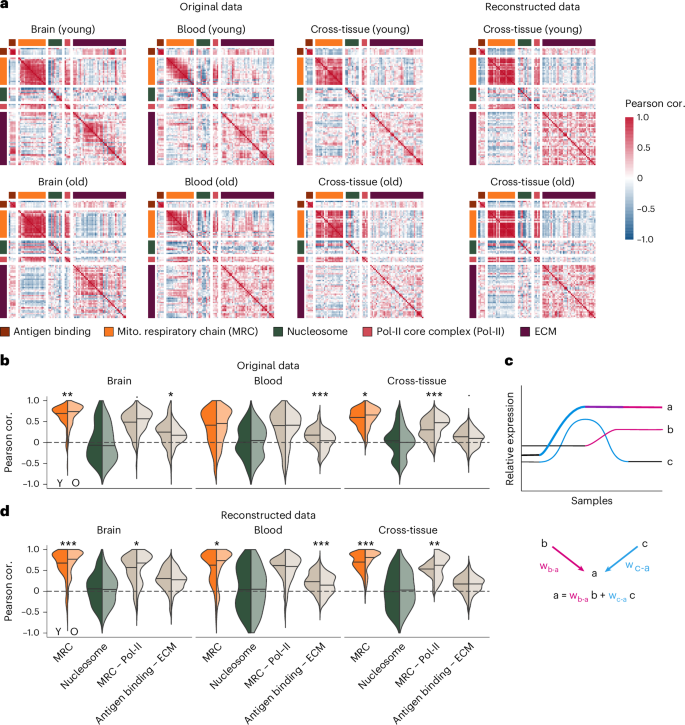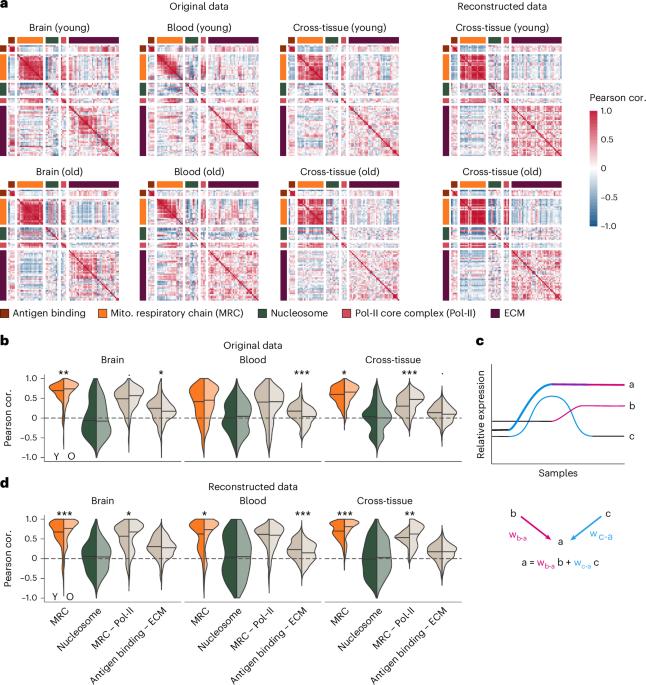Loss of coordination between basic cellular processes in human aging
IF 17
Q1 CELL BIOLOGY
引用次数: 0
Abstract
Age-related loss of gene expression coordination has been reported for distinct cell types and may lead to impaired cellular function. Here we propose a method for quantifying age-related changes in transcriptional regulatory relationships between genes, based on a model learned from external data. We used this method to uncover age-related trends in gene–gene relationships across eight human tissues, which demonstrates that reduced co-expression may also result from coordinated transcriptional responses. Our analyses reveal similar numbers of strengthening and weakening gene–gene relationships with age, impacting both tissue-specific (for example, coagulation in blood) and ubiquitous biological functions. Regulatory relationships becoming weaker with age were established mostly between genes operating in distinct cellular processes. As opposed to that, regulatory relationships becoming stronger with age were established both within and between different cellular functions. Our work reveals that, although most transcriptional regulatory gene–gene relationships are maintained during aging, those with declining regulatory coupling result mostly from a loss of coordination between distinct cellular processes. Age-related loss of gene expression coordination may contribute to impaired cellular function. In this study, the authors analyzed age-related trends in gene–gene relationships. They found that expression control often remains intact among genes involved in shared cellular functions while the coordination between functions tends to decline.


人类衰老过程中基本细胞过程之间失去协调。
据报道,不同类型的细胞都存在与年龄相关的基因表达失调现象,这可能会导致细胞功能受损。在这里,我们根据从外部数据中学习到的模型,提出了一种量化基因间转录调控关系的年龄相关变化的方法。我们用这种方法揭示了八个人体组织中基因-基因关系中与年龄相关的趋势,这表明共表达的减少也可能是协调转录反应的结果。我们的分析表明,随着年龄的增长,基因与基因之间的关系增强和减弱的数量相似,既影响组织特异性(例如血液中的凝血功能),也影响普遍存在的生物功能。随年龄增长而减弱的调控关系主要是在不同细胞过程中起作用的基因之间建立的。与此相反,随年龄增长而变强的调控关系既存在于不同细胞功能内部,也存在于不同细胞功能之间。我们的研究发现,虽然大多数转录调控基因与基因之间的关系在衰老过程中得以维持,但那些调控耦合性下降的基因主要是由于不同细胞过程之间失去了协调。
本文章由计算机程序翻译,如有差异,请以英文原文为准。
求助全文
约1分钟内获得全文
求助全文

 求助内容:
求助内容: 应助结果提醒方式:
应助结果提醒方式:


